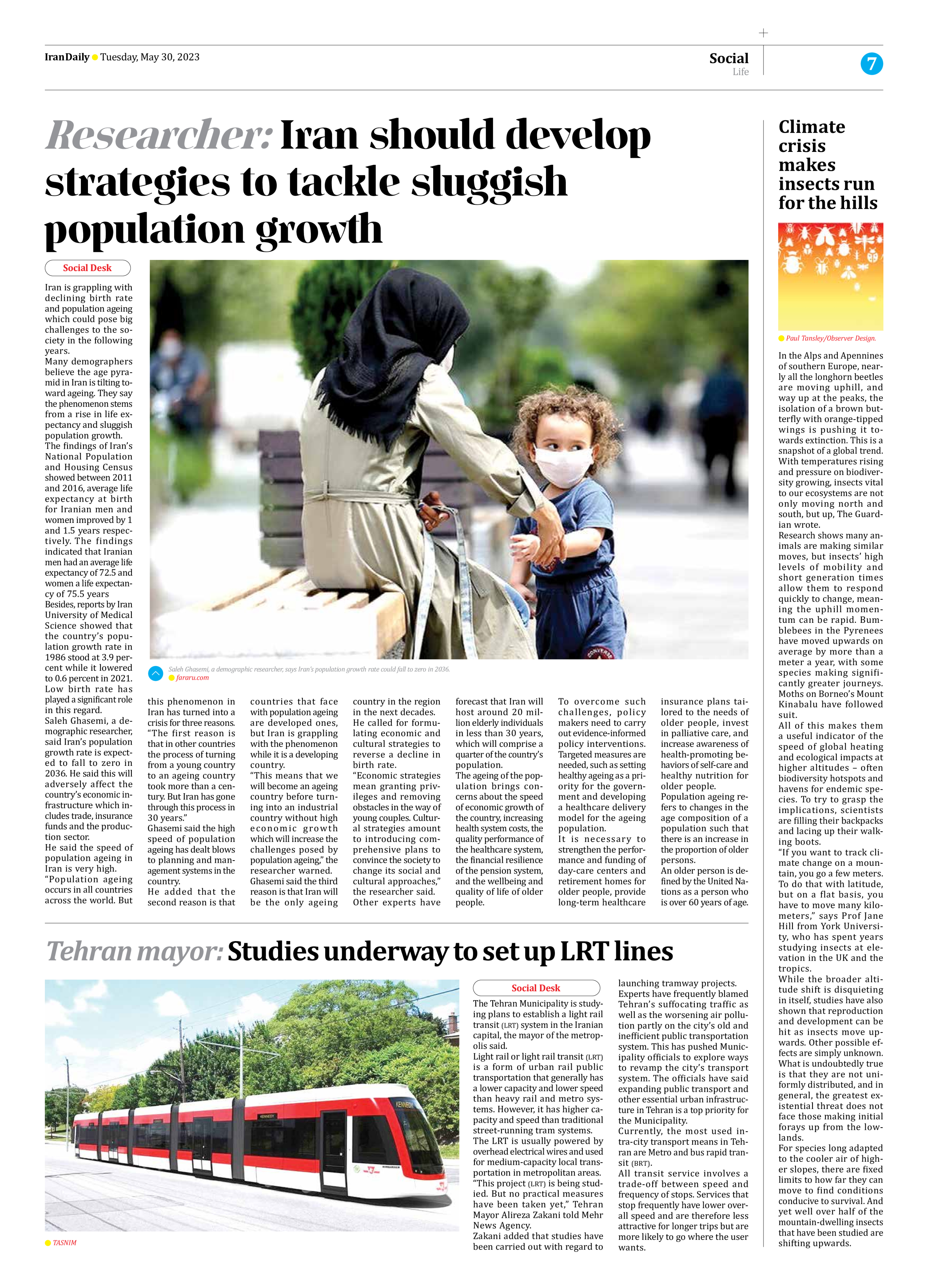
Researcher: Iran should develop strategies to tackle sluggish population growth
Iran is grappling with declining birth rate and population ageing which could pose big challenges to the society in the following years.
Many demographers believe the age pyramid in Iran is tilting toward ageing. They say the phenomenon stems from a rise in life expectancy and sluggish population growth.
The findings of Iran’s National Population and Housing Census showed between 2011 and 2016, average life expectancy at birth for Iranian men and women improved by 1 and 1.5 years respectively. The findings indicated that Iranian men had an average life expectancy of 72.5 and women a life expectancy of 75.5 years
Besides, reports by Iran University of Medical Science showed that the country’s population growth rate in 1986 stood at 3.9 percent while it lowered to 0.6 percent in 2021. Low birth rate has played a significant role in this regard.
Saleh Ghasemi, a demographic researcher, said Iran’s population growth rate is expected to fall to zero in 2036. He said this will adversely affect the country’s economic infrastructure which includes trade, insurance funds and the production sector.
He said the speed of population ageing in Iran is very high.
“Population ageing occurs in all countries across the world. But this phenomenon in Iran has turned into a crisis for three reasons.
“The first reason is that in other countries the process of turning from a young country to an ageing country took more than a century. But Iran has gone through this process in 30 years.”
Ghasemi said the high speed of population ageing has dealt blows to planning and management systems in the country.
He added that the second reason is that countries that face with population ageing are developed ones, but Iran is grappling with the phenomenon while it is a developing country.
“This means that we will become an ageing country before turning into an industrial country without high economic growth which will increase the challenges posed by population ageing,” the researcher warned.
Ghasemi said the third reason is that Iran will be the only ageing country in the region in the next decades.
He called for formulating economic and cultural strategies to reverse a decline in birth rate.
“Economic strategies mean granting privileges and removing obstacles in the way of young couples. Cultural strategies amount to introducing comprehensive plans to convince the society to change its social and cultural approaches,” the researcher said.
Other experts have forecast that Iran will host around 20 million elderly individuals in less than 30 years, which will comprise a quarter of the country’s population.
The ageing of the population brings concerns about the speed of economic growth of the country, increasing health system costs, the quality performance of the healthcare system, the financial resilience of the pension system, and the wellbeing and quality of life of older people.
To overcome such challenges, policy makers need to carry out evidence-informed policy interventions. Targeted measures are needed, such as setting healthy ageing as a priority for the government and developing a healthcare delivery model for the ageing population.
It is necessary to strengthen the performance and funding of day-care centers and retirement homes for older people, provide long-term healthcare insurance plans tailored to the needs of older people, invest in palliative care, and increase awareness of health-promoting behaviors of self-care and healthy nutrition for older people.
Population ageing refers to changes in the age composition of a population such that there is an increase in the proportion of older persons.
An older person is defined by the United Nations as a person who is over 60 years of age.







